Activities 6
Personal, Social and Emotional Development
Turn taking
Waiting and taking turns can often be difficult for young children. Turn taking is a skill that needs to be learnt and practised. Using everyday opportunities to reinforce turn taking and waiting for their turn are really valuable.
Turn Taking ideas; building towers, blowing bubbles, pushing a car back and forward, posting shapes into a sorter, scooping mud into a pot, stirring the cake mix etc
Turn taking supports communication: ‘Mummy’s turn.’, ‘Yusuf’s turn.’ (‘My turn’, ‘Your turn.’) Taking turns at copying each other’s actions e.g. clapping, stomping, jumping etc. is a fun way to learn about body awareness, and develop balance and gross motor skills. (Physical Development).
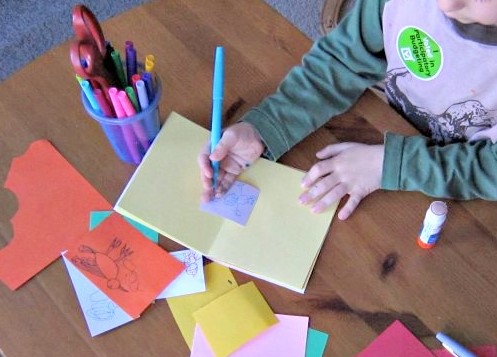
Why not make a book together? It is a good way of taking turns and a good way to talk about which pictures your child wants in their book. You could create a page each, or involve other children at home. You could recreate one of their favourite stories.
To support them you could provide pictures for them to choose between. "Shall we put the dog or the cat next?’ Sorting pictures helps with their grouping and categorisation skills.
Junk mail or old catalogues are great for tearing or cutting out pictures to make into books.
 Making a book about your child’s favourite colour, animal or of any of their interests can help develop their sense of self.
Making a book about your child’s favourite colour, animal or of any of their interests can help develop their sense of self.
Keep the turns short as you don’t want to lose their attention or interest.
REMEMBER - Always praise their mark making and creative contributions, all marks are communication and need to be valued. If children feel they are not writing properly they will quickly develop "I can't do it!". It is much easier for a child who enjoys mark making to learn to write when they are ready, than a child who believes writing is something they can't do.
Communication and Language
Story telling
A big advantage of storytelling is that listening to stories enhances a child’s vocabulary and their listening skills.
Make a story telling chair. All you need is a comfortable chair that you and your child can take turns to sit on and cover it with a colourful or sparkly cloth or blanket to make it special.
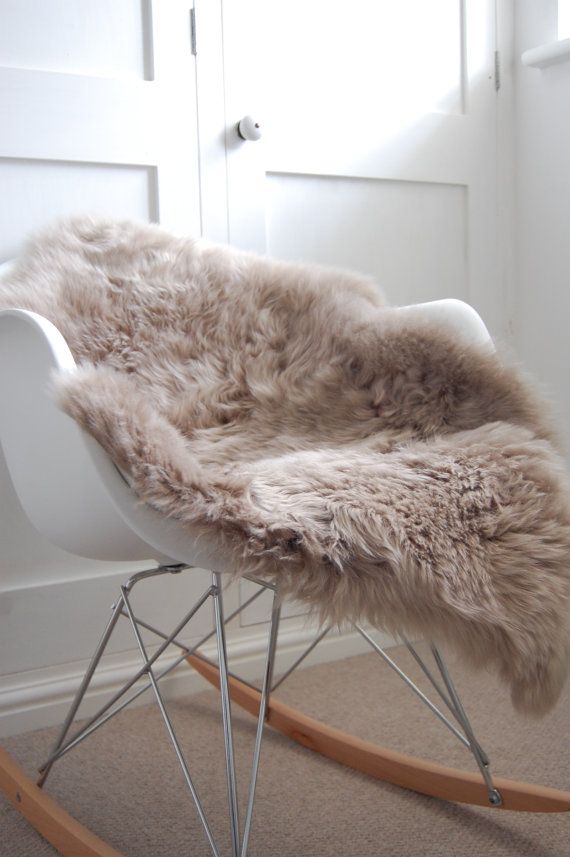
 You start off by telling a short story and then let them to have a go at telling their own or the same story that you have told them. Your child may tell a well-known story in their own words but they will use some vocabulary from the story e.g. ‘Who’s been eating my porridge?’ (from ‘Goldilocks and the Three Bears’).
You start off by telling a short story and then let them to have a go at telling their own or the same story that you have told them. Your child may tell a well-known story in their own words but they will use some vocabulary from the story e.g. ‘Who’s been eating my porridge?’ (from ‘Goldilocks and the Three Bears’).
You can watch Goldilocks and the Three Bears, You Tube ‘Goldilocks and the three bears’ by Oxbridge Baby to remind children of the story.
Reading stories to children can introduce them to imaginary places, extraordinary characters and can also be a great way of helping them deal with real life situations. For instance, ‘Should Goldilocks have gone in to the Three Bear’s house?’
Ask them questions about the story. Can they remember what happened in the story? or ‘Why do you think this character did that?’ This helps them to think about and understand other people’s actions and they may show empathy for some of the characters such as Baby Bear.
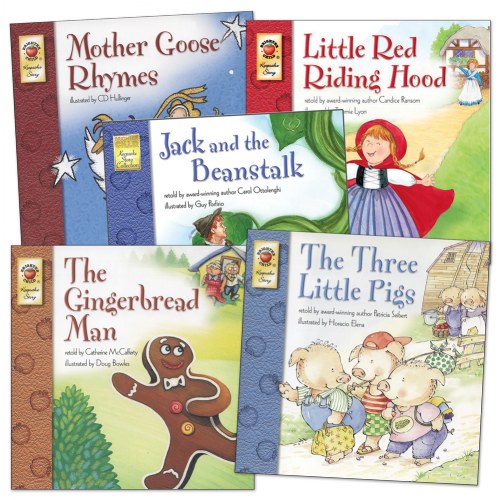
If you prefer to you can just tell a short story about yourself. ‘Once upon a time (whoever is telling the story) woke up. He/She went downstairs to make a cup of tea. But there was no milk. So, (whoever is telling the story) went to the shop and bought some. When He/She got home He/She put the milk into the tea and then drank it. The end.’
Physical Development
Bean bag games - DON'T PANIC - use a pair of loosely rolled up socks if you don't have a been bag.
Bean bag games are good for teaching: co-ordination, direction, dexterity, listening skills, hand-eye co-ordination and communication. 
All you need is: 4 different different coloured cards (these could be coloured in) or shape cards, bean bags (or rolled up socks) and music.
Remove any obstacles from the room that pose a health and safety risk. (Be safe).
Place the four cards around the room. Play the music. Ask them to run around the room and when the music stops ask them to pick up a bean bag. After that start the music again. Each time you stop the music call out an instruction. For example: ‘Throw your bean bag on the red card.’ ‘Throw your bean bag on the square.’
If your child wants a challenge, have coloured shapes around the room. ‘Throw your bean bag on the yellow circle.’
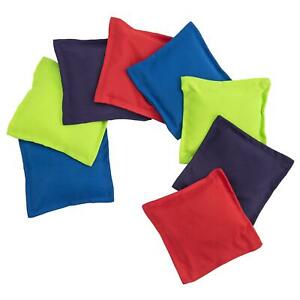

You could adapt the game to putting the bean bag on parts of your body: ‘Put the bean bag on your head/foot.’
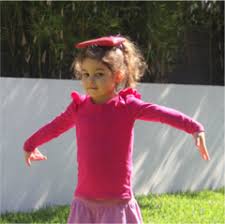
Rhyme of the Week
Wind the bobbin up
Wind the bobbin up
Pull, pull, clap, clap, clap
Wind it back again
Wind it back again
Pull, pull, clap, clap, clap
Point to the ceiling
Point to the floor
Point to the window
Point to the door
Clap your hands together, one, two, three
Put your hands upon your knees.
If you are not familiar with this rhyme you can find it here. Please remember singing with your child without music and videos is really beneficial - they won't mind if you get the tune wrong.